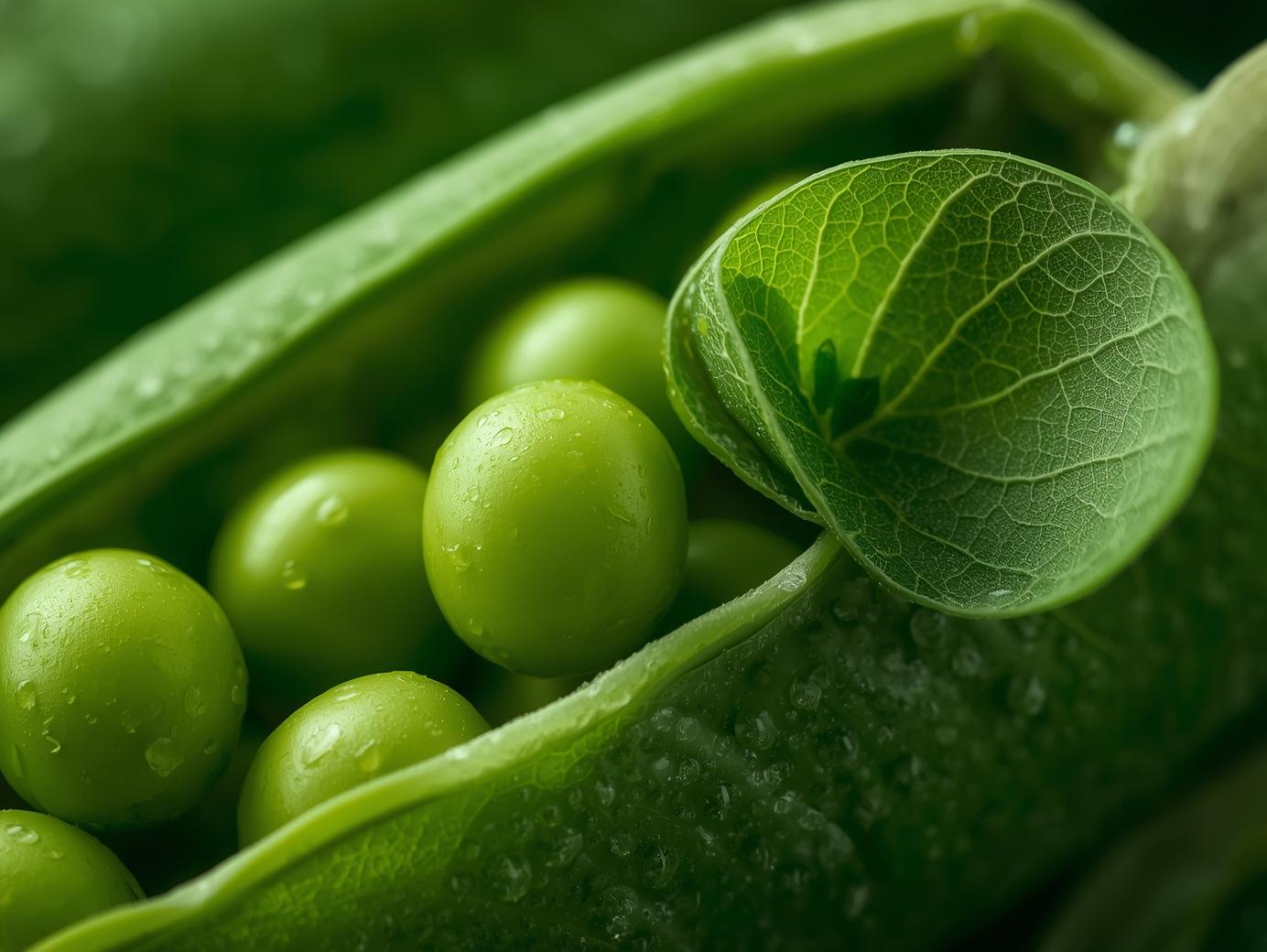Site Preparation
The success of growing green peas begins with proper site preparation. Choose a sunny area in your courtyard that receives at least six hours of direct sunlight each day. Green peas prefer cool weather and well-aerated spaces, so select a location that gets good airflow and is not prone to waterlogging. Before planting, remove weeds, rocks, and debris from the area to prevent competition and pests. Raised beds or large containers are ideal for small courtyards, as they provide both drainage and space for roots to expand.
Once the site is clean, loosen the soil to a depth of about 10 inches to encourage strong root growth. Mix in organic compost or aged manure to improve soil fertility and structure. For courtyard gardens in colder U.S. regions, preparing the site a few weeks before the last frost will allow the soil to warm slightly before planting. Proper site preparation ensures a strong start for green pea plants and sets the foundation for healthy, vigorous growth throughout the season.
Soil Selection
Choosing the right soil is crucial when growing green peas. Peas thrive in light, well-drained loamy soil rich in organic matter. The ideal soil pH should range between 6.0 and 7.5, slightly acidic to neutral. Heavy clay soil can cause poor drainage, leading to root rot, while overly sandy soil dries out too quickly. Mixing compost or peat moss into the soil helps create a perfect balance of moisture retention and drainage.
Courtyard gardeners in the USA can use high-quality potting mix when growing peas in containers. Adding compost or worm castings enhances soil fertility and supports beneficial microbes. Avoid adding too much nitrogen to the soil, as it encourages leafy growth rather than pod production. A well-balanced, nutrient-rich soil promotes steady plant growth and ensures that green pea vines develop an abundance of flavorful pods.
Planting
Green peas can be planted directly into the ground or containers, as they do not transplant well due to their delicate roots. The best time to plant peas in most U.S. regions is in early spring, as soon as the soil can be worked and temperatures are above 40°F. In milder climates, peas can also be planted in the fall for a second harvest. Sow the seeds about one inch deep and two inches apart in rows spaced 12 to 18 inches apart.
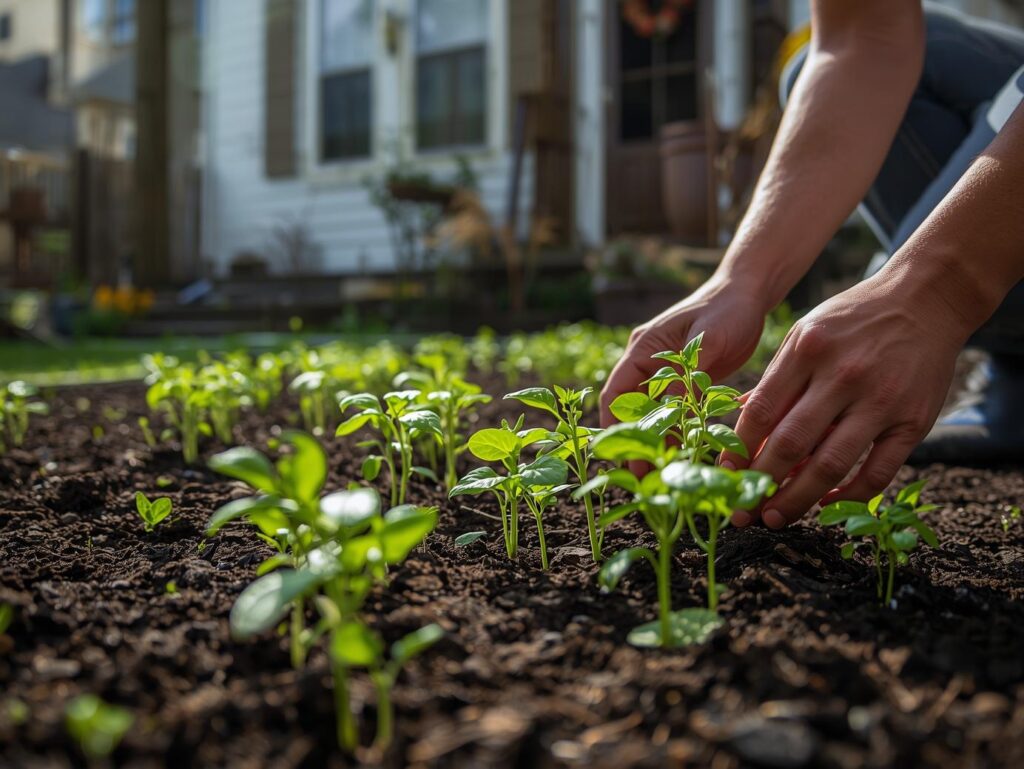
For vertical gardening in courtyards, install trellises, netting, or wire supports at the time of planting to help vines climb. This keeps the pods clean and allows better air circulation, reducing disease risk. Water the soil immediately after sowing to settle the seeds, and keep it consistently moist until germination occurs. Proper planting techniques help peas establish strong roots and healthy vines, leading to better flowering and pod formation.
Watering
Consistent watering is key to growing tender, sweet green peas. The soil should remain evenly moist, especially during germination and flowering stages. Water deeply once or twice a week, depending on the weather and soil type. Avoid overwatering, as soggy soil can suffocate roots and cause fungal diseases. Using mulch around the base of the plants helps retain soil moisture and regulate temperature, especially in sunny courtyards.
Water early in the morning so the foliage has time to dry during the day, preventing the spread of mildew. During the pod development phase, keep the soil consistently moist to encourage plump, flavorful peas. As the plants mature and pods near harvest, slightly reduce watering to enhance sweetness and prevent splitting. With careful water management, your green peas will remain healthy and productive throughout the growing season.
Fertilizing
Green peas are light feeders compared to other vegetables, as they can fix their own nitrogen through their roots. However, enriching the soil before planting ensures strong early growth. Incorporate compost or well-rotted manure into the soil two weeks before sowing. During the growing season, side-dress with a balanced, low-nitrogen organic fertilizer once the vines begin to flower to promote pod formation without excessive leaf growth.
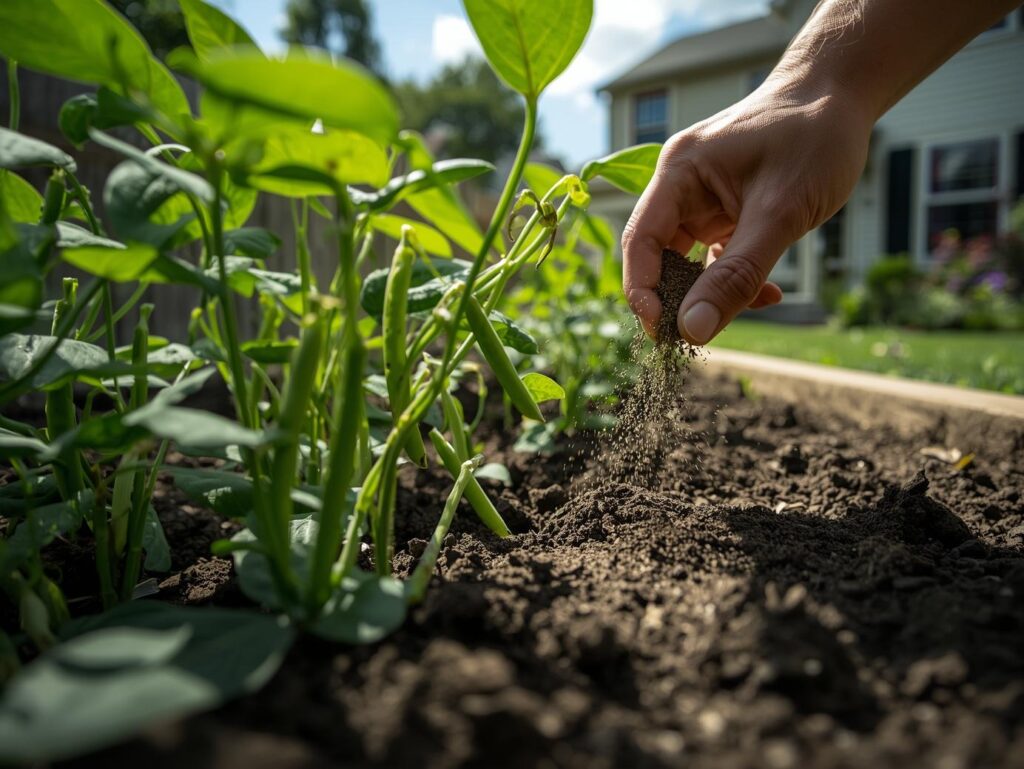
For sustainable courtyard gardening, organic fertilizers such as compost tea or liquid seaweed extract can be applied every few weeks to maintain steady growth. Avoid over-fertilizing, as it can lead to lush vines with fewer pods. Maintaining a balanced nutrient supply supports vigorous growth, healthy blossoms, and a continuous yield of sweet, tender green peas for weeks on end.
Pruning and Training
Pruning and training green pea plants is important, especially in limited courtyard spaces. As the vines grow, pinch off any weak or crowded shoots to improve air circulation and direct energy toward pod production. Training the vines to climb vertically on trellises, poles, or garden nets keeps the plants tidy and ensures better light exposure to all parts of the plant. This also prevents the pods from touching the ground, reducing the risk of rot or pest damage.
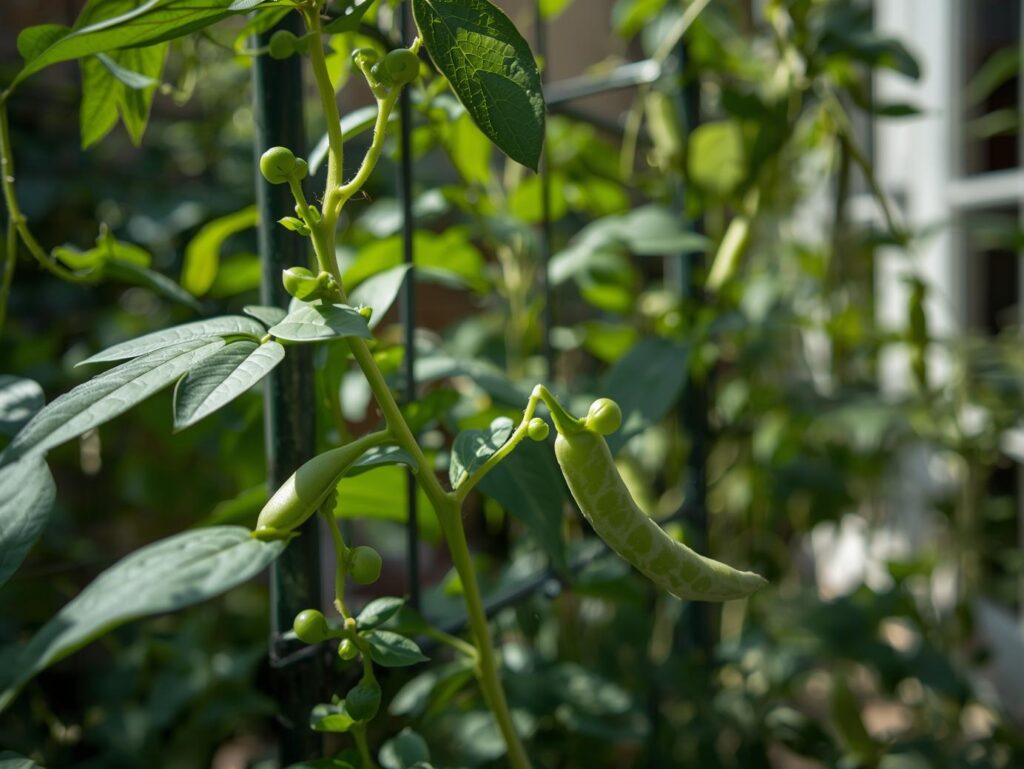
Regularly checking and tying up long vines helps maintain order and prevents tangling, especially during windy conditions. For bush-type peas, light pruning is enough to remove yellowing leaves and dead growth. A well-trained pea plant not only enhances the appearance of your courtyard garden but also improves productivity and ease of harvesting. Proper pruning and support result in healthier plants and higher yields.
Pest and Disease Control
Green peas are relatively hardy but can still be affected by pests such as aphids, pea weevils, and cutworms. Regular inspection of the leaves, stems, and pods helps identify infestations early. Removing affected parts and using organic pest control methods like neem oil or insecticidal soap can keep pests under control. Encouraging beneficial insects such as ladybugs and lacewings also helps maintain a natural balance in your courtyard garden.
Common diseases affecting peas include powdery mildew, root rot, and fusarium wilt. To prevent these, ensure proper spacing between plants and avoid overhead watering. Crop rotation and planting disease-resistant pea varieties are effective preventive strategies. Removing plant debris and keeping the garden clean after harvest further reduces disease risks. Healthy, well-maintained plants are more resilient and capable of producing abundant pods throughout the season.
Fruiting and Harvest
Green peas typically begin to flower four to six weeks after planting, depending on the variety and climate. The flowers soon develop into pods that fill with tender, sweet peas. Harvesting should begin when the pods are plump, bright green, and firm to the touch. If left too long, the peas can become starchy and lose their sweetness. Use both hands when picking to avoid damaging the vines.
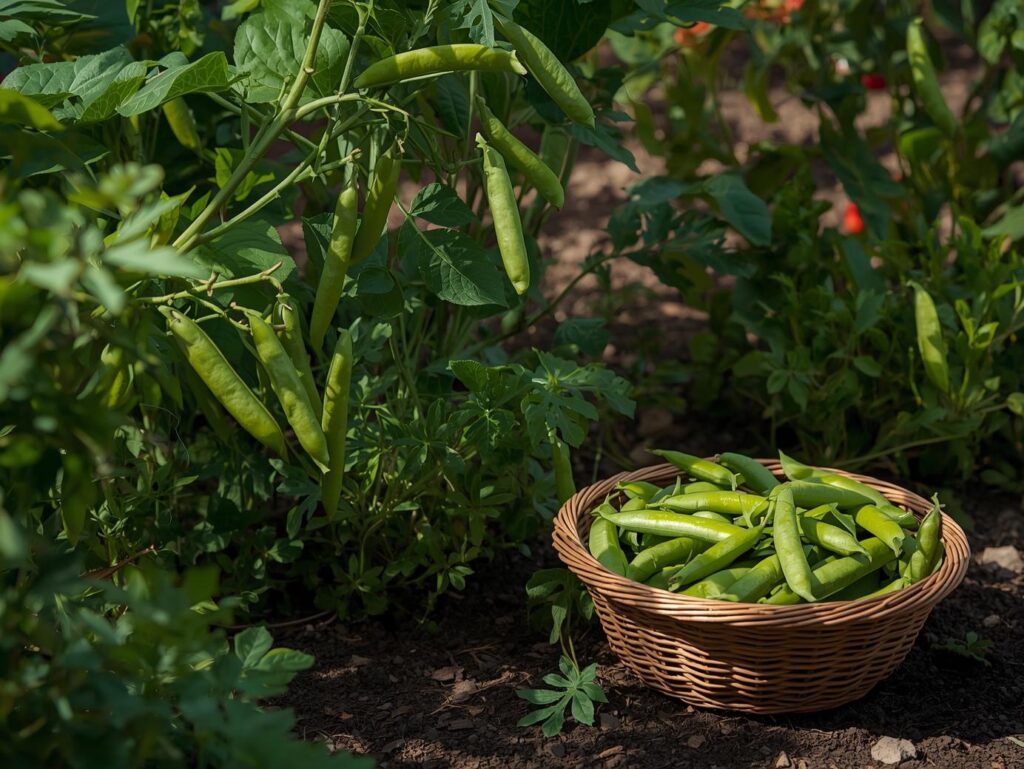
Frequent harvesting encourages continuous production of new pods. For the best flavor, pick peas early in the morning when sugar levels are at their highest. After harvesting, store the pods in a cool, dry place or refrigerate them to preserve freshness. Courtyard gardeners in the USA can enjoy multiple harvests in a season by planting successive batches every few weeks. A well-tended green pea garden rewards you with crisp, delicious peas that are perfect for fresh meals and home cooking.
